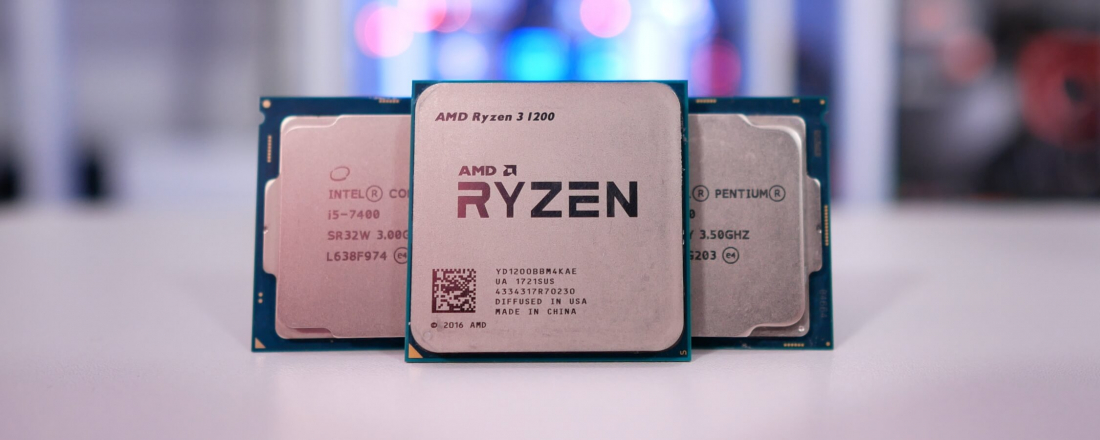Wrapping Things Up
After comparing five CPUs in nine different games using the GeForce GTX 1060, GTX 1070 and GTX 1080, we have some interesting results to sort through. Before jumping to that, we'd like to note that the spread of games we included should cover most real-world scenarios.
Despite being capable of utilizing high-end hardware, modern titles such as Battlefield 1, F1 2016, Total War: Warhammer, The Witcher 3, Overwatch and Far Cry Primal don't punish entry-level hardware to the point of becoming obsolete. The developers have achieved a happy medium.
When playing those titles with a mid-range GPU such as the GTX 1060, we found little difference between the Pentium G4560 and Core i5-7400. The same was true for the quad-core chip Ryzen 5 1400, though that model also supports eight threads. Keep in mind that the GTX 1060 isn't exactly slow either, being basically on par with the previous-generation GTX 980.
If you're gaming with a graphics card equivalent to the GTX 1060 or slower and you plan on playing newly released titles, then the Ryzen 3 CPUs will be as good as any. What we've seen here is once you upgrade your GPU in the future or games become more demanding, Ryzen 3 will remain relevant and within reason gamers won't need to upgrade their CPU. We saw this when moving from the GTX 1060 to the GTX 1070, whereas the G4560 would often see little to no performance gain with the faster GPU, the Ryzen 3 CPUs would.
As I mentioned earlier, you can overclock the Ryzen 3 CPUs for even greater performance but this is something I'll look into later.
Those of you playing older yet still popular titles such as World of Tanks and Counter Strike only really have to worry about single thread CPU performance. The Core i5 was clearly the superior choice here but as a little bit of a spoiler I can tell you that overclocking Ryzen 3 does allow the red team to take the lead over the i5-7400, albeit by a slim margin.
That said, if you're after as many frames as possible in this competitive shooter then getting an unlocked Intel quad-core and overclocking it is the best way to go. Conversely, if you want to spend as little money as possible or want the best-rounded chip for all occasions, then Ryzen 3 is a smarter choice than the i5-7400.
In more modern competitive shooters such as Rainbow Six Siege and Overwatch, Ryzen 3 pretty well matched the i5-7400 without any overclocking and compared to the G4560 it was clearly superior, at least when looking at Overwatch's results with the GTX 1070.
Jumping back to a modern title such as Battlefield 1, we see that regardless of whether you choose the Ryzen 3 or locked Core i5, neither have enough in the tank to max out a graphics card packing more rendering power than the GTX 1070, at least under these conditions.
As resolutions are increased, further load will be placed on the GPU and the CPU will likely become less of a concern. Even so, we know for a fact that no matter how many pixels your GPU can produce, it isn't going to render more than around 110fps in Battlefield 1 with a stock Ryzen 3 CPU. Likewise, in a game like CS:GO you won't break the 300fps barrier without a little BIOS tinkering.
Focusing on out of the box performance, Ryzen looks like an ideal solution for the vast majority of PC gamers and should hold strong well in the future. As a side note, there will be those who wish we tested with even more affordable GPUs such as the GTX 1050 Ti, 1050 or even the GT 1030, but the fact of the matter is, that data wouldn't reveal anything we didn't see here with the GTX 1060.
Shopping shortcuts:
- Ryzen 5 1400 Amazon, Newegg
- Ryzen 3 1200 Amazon, Newegg
- Core i5-7400 Amazon, Newegg
- Pentium G4560 Amazon, Newegg
Spoiler ahead: We'll be getting busy with Threadripper and Vega in the coming weeks, but as a follow up to this piece we'll be back to see how Ryzen 3 1200 and Ryzen 5 1400 compare when overclocked to 4GHz. Separately, we also plan to pit Ryzen 3 parts against an overclocked Core i5-2500K and FX-8370. You can expect those comparisons to follow the same format as seen here with nine games and three GPUs.


